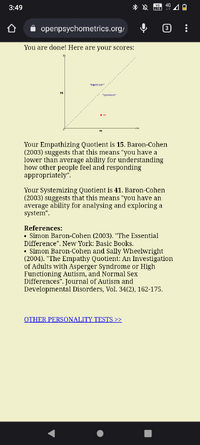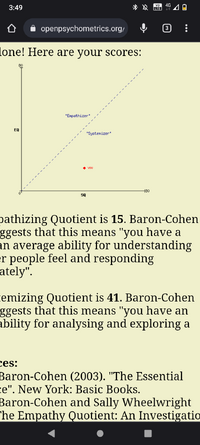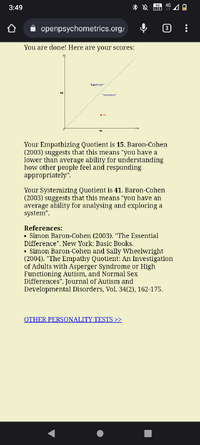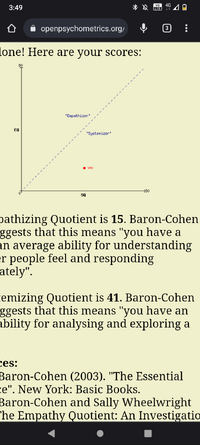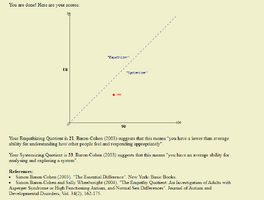MongoloidJoe
Self-banned
-
- Joined
- Jul 13, 2023
- Posts
- 1,933
Here's the test
The empathising–systemising (E–S) theory is a theory on the psychological basis of autism and male–female neurological differences originally put forward by English clinical psychologist Simon Baron-Cohen.[1] It classifies individuals based on abilities in empathic thinking (E) and systematic thinking (S). It measures skills using an Empathy Quotient (EQ) and Systemising Quotient (SQ) and attempts to explain the social and communication symptoms in autism spectrum disorders as deficits and delays in empathy combined with intact or superior systemising.
According to Baron-Cohen, the E–S theory has been tested using the Empathy Quotient (EQ) and Systemising Quotient (SQ), developed by him and colleagues, and generates five different 'brain types' depending on the presence or absence of discrepancies between their scores on E or S. E–S profiles show that the profile E>S is more common in females than in males, and the profile S>E is more common in males than in females
Empathizing-Systemizing Test
Free on-line personality test measuring Simon Baron-Cohen's Empathizing and Systemizing Quotients.
openpsychometrics.org
The empathising–systemising (E–S) theory is a theory on the psychological basis of autism and male–female neurological differences originally put forward by English clinical psychologist Simon Baron-Cohen.[1] It classifies individuals based on abilities in empathic thinking (E) and systematic thinking (S). It measures skills using an Empathy Quotient (EQ) and Systemising Quotient (SQ) and attempts to explain the social and communication symptoms in autism spectrum disorders as deficits and delays in empathy combined with intact or superior systemising.
According to Baron-Cohen, the E–S theory has been tested using the Empathy Quotient (EQ) and Systemising Quotient (SQ), developed by him and colleagues, and generates five different 'brain types' depending on the presence or absence of discrepancies between their scores on E or S. E–S profiles show that the profile E>S is more common in females than in males, and the profile S>E is more common in males than in females
